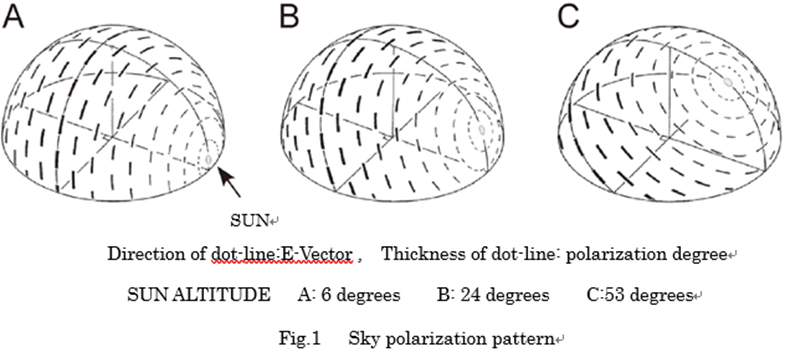■Biomimetics
Hello ! Today,we’ll talk about the ability of insects to perform polarization compassing in the context of Biomimetics.
■Honeybee’s polarization compass
There were some colder days this April than usual, but the flowers at the entrance of our Head Quarters also bloom, making it a spring-looking view. I’m looking forward to seeing bees and other insects.

The bee seems to rely on the intensity of polarization (degree of polarization) in the sky to remember the direction of the flower field. I would like to introduce you to some very interesting papers on this topic.
Light falling from the sun onto the Earth is scattered by molecules in the atmosphere, and the scattered light is partially polarized according to Rayleigh Scattering Law so that a pattern of polarized light is created in the sky.
Polarization direction,that is called “E-Vector” in this science field, have its oscillation direction which is formed by a concentric circle centered on the sun, and the degree of polarization, which is the intensity of polarization, becomes stronger as the distance from the sun increases, and becomes weaker when the scattering angle exceeds 90 degrees.Thus, the polarization pattern appears to change from time to time depending on the position of the sun (Figures 1 A-C).

It seems that this information is relied upon to reach the flower field or nest site for honeybee. It is also interesting to tell their bees about the direction of the flower field by the difference in the bee dance when they tell their bees about the direction, isn’t it?
When you consider a sensor that can easily capture a state of polarization like bee,please ask LUCEO. We have been developing a variety of optical units.
■reference
(1) Midori Sakura:Neural Mechanism of Insect Polarization Compass, Comparative Physiochemistry, Vol.32, No. 4, (2015)
